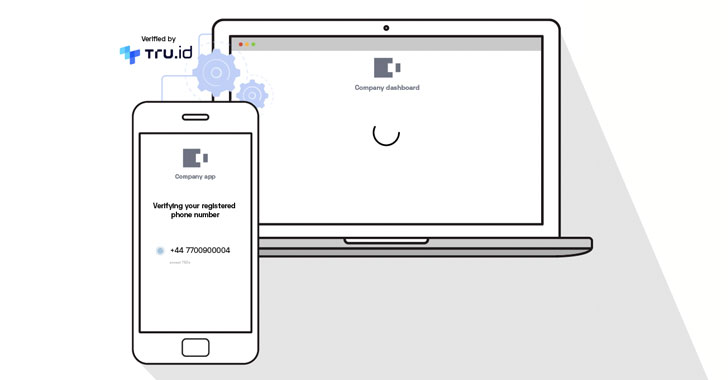Forget watercooler conspiracies or boardroom battles. There's a new war in the office. As companies nudge their staff to return to communal workspaces, many workers don't actually want to – more than 50 percent of employees would rather quit, according to research by EY.
While HR teams worry over the hearts and minds of staff, IT security professionals have a different battle plan to draft – how to make the new normal of the hybrid workplace secure.
The Trade-off Between Usability and Security
A company's biggest vulnerability continues to be its people. In a hybrid workplace, a Zero Trust strategy means ever-tightening security. The MFA a company chooses affects the difficulty of logging into email, dashboards, workflow tools, client documentation, and so on. Or, conversely, how porous access security is.
Now imagine this scenario. An employee opens a company portal, confirms a prompt on a company app on her phone, and that's it. She has been authenticated seamlessly by a strong possession factor using her company registered mobile number against the SIM. Nothing to remember, nothing to forget, no tokens, and no codes to type against a countdown.
'End Points' Are Human
In order to implement a Zero Trust policy that's both effective and accessible, it's time to stop thinking of employees as 'end points', and address the human habits in security. For example, a Twitter poll by tru.ID revealed that 40% of people use a 'mental system' for passwords.
These mental systems are in a race between complexity and memory. Passwords now need to be long, complicated, and nonsensical – and even those still get breached, thanks to database leaks or phishing scams. This just isn't sustainable.
Inherence factors such as biometrics still involve friction to set up and use. As we know from the face or fingerprint recognition on our phones, biometrics don't always work first-time and still require a passcode failover. Plus, not all levels of access require such stringent security.
Possession Factor using Mobile Network Authentication
On the spectrum between passwords and biometrics lies the possession factor – most commonly the mobile phone. That's how SMS OTP and authenticator apps came about, but these come with fraud risk, usability issues, and are no longer the best solution.
The simpler, stronger solution to verification has been with us all along – using the strong security of the SIM card that is in every mobile phone. Mobile networks authenticate customers all the time to allow calls and data. The SIM card uses advanced cryptographic security, and is an established form of real-time verification that doesn't need any separate apps or hardware tokens.
However, the real magic of SIM-based authentication is that it requires no user action. It's there already.
Now, APIs by tru.ID open up SIM-based network authentication for developers to build frictionless, yet secure verification experiences.
Any concerns over privacy are alleviated by the fact that tru.ID does not process personally identifiable information between the network and the APIs. It's purely a URL-based lookup.
Passwordless Login: Zero User Effort and Zero Trust Security
One of the ways to use tru.ID APIs is to build a passwordless solution for remote login using a companion app to access an enterprise system. By implementing a one-tap interaction on a mobile phone, businesses can remove user friction from step-up security, and the risk of human error.
Here's an example workflow for an enterprise login companion app using tru.ID APIs:
Preface: user has the official company app installed on their phone. The enterprise app has tru.ID verification APIs embedded.
User attempts to login to a company system (email, data dashboard etc.). This can be on desktop or mobile. The system identifies the user attempting to login and sends a Push Notification. The mobile device and the company app receive the Push Notification, and the user is prompted to Confirm or Reject the login attempt. If it is them that's logging in, they will approve. When the user approves, a request is made to the tru.ID API via a backend to create a Check URL for that user's registered phone number. The company app will then request that Check URL over the mobile data connection using a tru.ID SDK. This is the stage when the mobile network operator and tru.ID verify that the phone number for the current device matches the phone number the user has registered on the login system. Note that no PII is exchanged. This is purely a URL-based lookup. Once the request has completed, the system will be informed by tru.ID whether the Check URL request and phone number match was successful. This is achieved via a webhook. If the phone number verification was successful, the user is logged in.Although there are a number of steps in this approach, it's important to note that the user only has one action: to Confirm or Reject the login.
Get Started
You can start testing for free and make your first API call within minutes – just sign up with tru.ID or check the documentation. tru.ID is keen to hear from the community to discuss case studies.
Found this article interesting? Follow THN on Facebook, Twitter and LinkedIn to read more exclusive content we post.
.png)
 3 years ago
230
3 years ago
230 
















 Bengali (Bangladesh) ·
Bengali (Bangladesh) ·  English (United States) ·
English (United States) ·